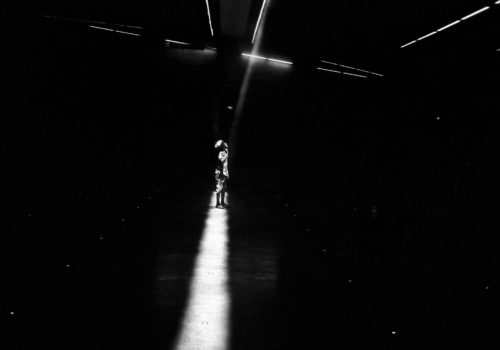Who is a city person? Today, more than two thirds of Europe’s population lives in cities. A knowledge of the historic genesis and of the economical, social and legal changes that cities have undergone since antiquity to modern times – as well as of a city’s problems as viewed by contemporary sociologists – gives us a lot to think about, but it still will not teach us how to understand a city. In addition to verifiable data from statistical yearbooks and sociological research, Imrich Veber’s photographs offer an entirely emotive, feeling based reflection of the European cities he has visited. With no claim to verity, they offer a view that ought to resonate primarily with our experience. This view does not worry itself with sociological, nor at all with photographical postulation, about how to observe today a city through one’s soul. / The HOMOurban series developed during the years of 2007 and 2012. With its visual form, it is a continuation of the strong tradition of the snapshot, but also of Czech documentary photography from the seventies and eighties. Imrich Veber hovers around the unclear border between tendencies that are most often designated as social or subjective documentary; he does not use the technology of today, and so the form of his photographs point to an unanchored timelessness. We find here the crampedness of urban space, the solitude of an individual in the middle of a crowd, absurdity, melancholy, estrangement, an element of the miraculous – all of this – as what usually tends to characterize similar city snapshots in the tradition of documentary photography. And we may even find something more. / Amid these pictures of European cities, what mindlessly piles up together are views of very diverse places – Prague, Madrid, Opava, Belgrade, Mikulov, Olomouc, Évora, Budapest, Moscow, Porto, Berlin, Paris, Nida, Venice, Corfu, Uzhhorod, London, Prešov, Rybaki, Lisbon… As is usual, we search for subtle differences: between the worlds of big cities, smaller ones and even smaller ones; between Western and Eastern Europe, or its southern and northern parts. Thus, according to slight indications, we more often differentiate. We would certainly not place these photographs next to one another. But in this way, Imrich Veber’s shots are provocative. By feeling, he forms them into collages of a shared identity.
He traverses; he draws our eyes across regions so that we concentrate on what is being shared. In a way, he has created an image of the European community, a photographic dialogue between experience from his native Opava life and experience from other cities.
Tomáš Pospěch
















